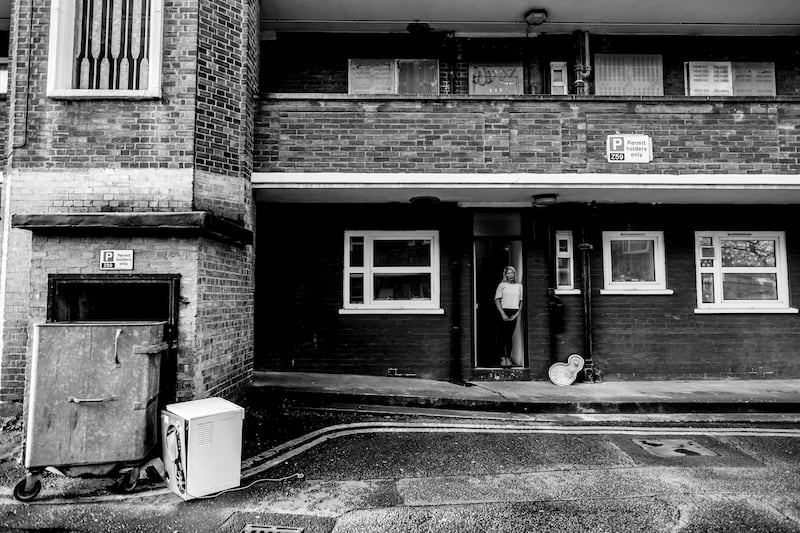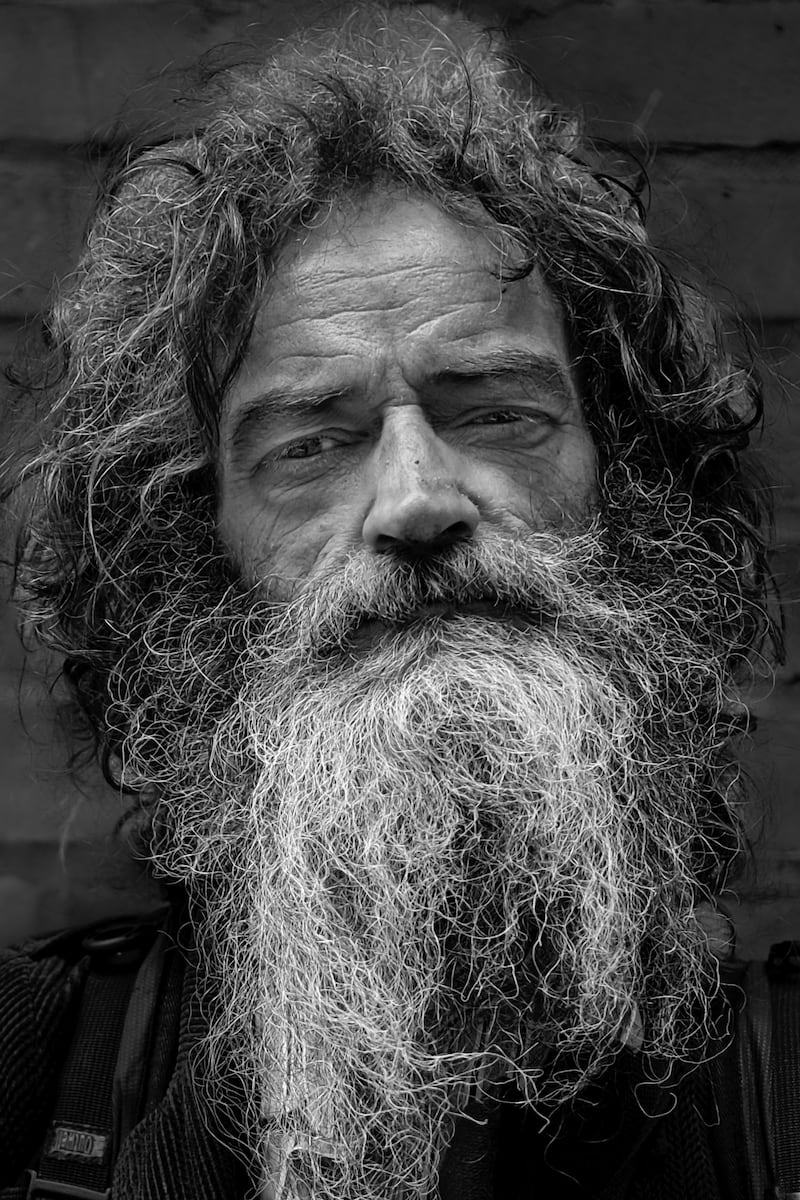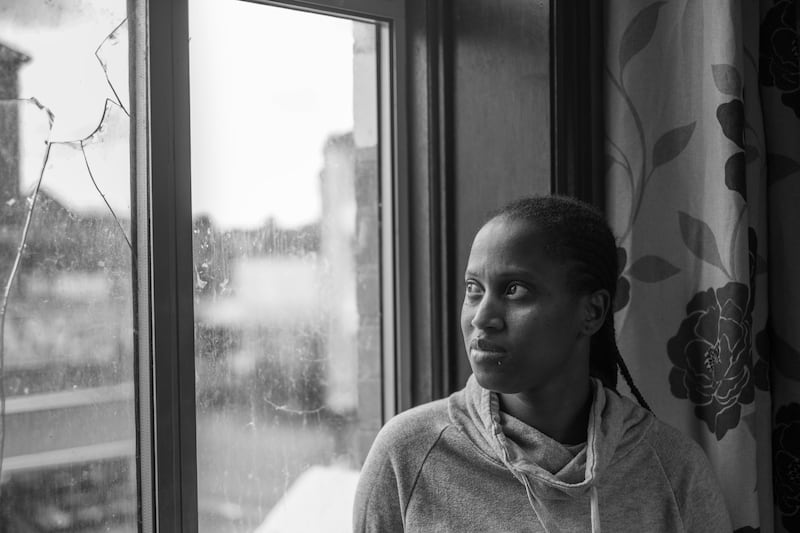“The worst thing about being on the street is being ignored and treated like something less than human.” Stephen had a haunted look about him as he said these words and I was struck by what a waste of potential it was to have someone like this abandoned by society to live a life sleeping rough.
We were standing on Rupert Street in Soho and Stephen was hanging around waiting for his friends from the homeless community who used to gather here around lunchtime every day. I was doing street photography and noticed Stephen standing there so we struck up a conversation and he told me a little of his story, about how he had become homeless after the death of his child, how he couldn’t cope with the loss and turned to drink, and how he had ended up on the streets in London. I listened to his story and then asked if I could make a portrait, which became the first photograph from the Outsiders Project. Sadly, Stephen died shortly afterwards aged only 39 after falling ill while sleeping rough.


When I saw that photograph printed, I decided that I would do a photo series on homelessness, capturing both their images and their personal testimony to highlight the hunger, discomfort, uncertainty and danger of living like that from their perspective. I hoped to focus attention on the way people are ignored and treated by society who see them as less than human. The goal was to change public perception of those who are experiencing homelessness, amplify their voices and encourage members of the public to see them as individuals rather than objects to be avoided.
The Outsiders project grew in the making until it became a national endeavour, seeking to document homelessness in all forms, from sleeping rough through to sofa surfing and living in slum housing. Anyone who lacks a safe, stable and habitable home environment can be considered to be homeless, and there are nearly 300,000 people in Britain today who are homeless, 120,000 of whom are children. The project eventually became a searing indictment of successive governments’ failures when it comes to homelessness and substandard housing.
Conor Pope: What if dry January turned into dry forever? Eight ways life has changed since I stopped drinking in 2022
‘The minute I sat down on the train, I knew I’d been scammed’: Are the Irish susceptible to con artists?
An unsettling conversation on the Dart leaves other passengers open-mouthed in amazement
In 1973 the Sunday Times Magazine published an article called Crisis on Skid Row featuring Don McCullin’s photographs of homeless people in London’s East End. They were very powerful images, but the accompanying article told us nothing about who these people actually were. That series, together with Nick Hedges’ Shelter photographs, were notable influences on the Outsiders project and reinforced my determination to bring out the humanity of the people in my portraits by capturing their stories as well as their images. These are people just like you and me and they aren’t defined by their homeless state.
[ Dublin through the lens of homelessnessOpens in new window ]
Over the next six years I interviewed and photographed numerous people who had lived experience of homelessness in partnership with the charity Shelter. The stories were remarkable and harrowing: from Loise, who lived street homeless with her baby in London for four years, to Woody who, in seven years of living street homeless in Manchester, could not remember a single act of kindness from a passing stranger.
Some of the housing conditions I saw were so bad they defy description: Sireena, who left Ireland due to experiencing racist abuse there, ended up living in some of the worst slum housing in London with literally everything in her flat being covered with mould: the carpets, the curtains, walls, ceilings, furniture, towels. I had never seen anything like it and three days after photographing that property the mould began to grow on my camera bag.


The stories of people such as Chantelle, who the local authority told to go away and be homeless on the street, and Joan, who had water pouring through her council flat for three months and could not afford to pay for food and heating, will stay with me forever. Nobody should be living like this in any progressive society.
The photographs and stories from the Outsiders project have now been turned into a book that is available from Bluecoat Press and an exhibition of the project is to be shown at the Williamson Art Gallery in Birkenhead from October to December 2023 before being toured around Britain












